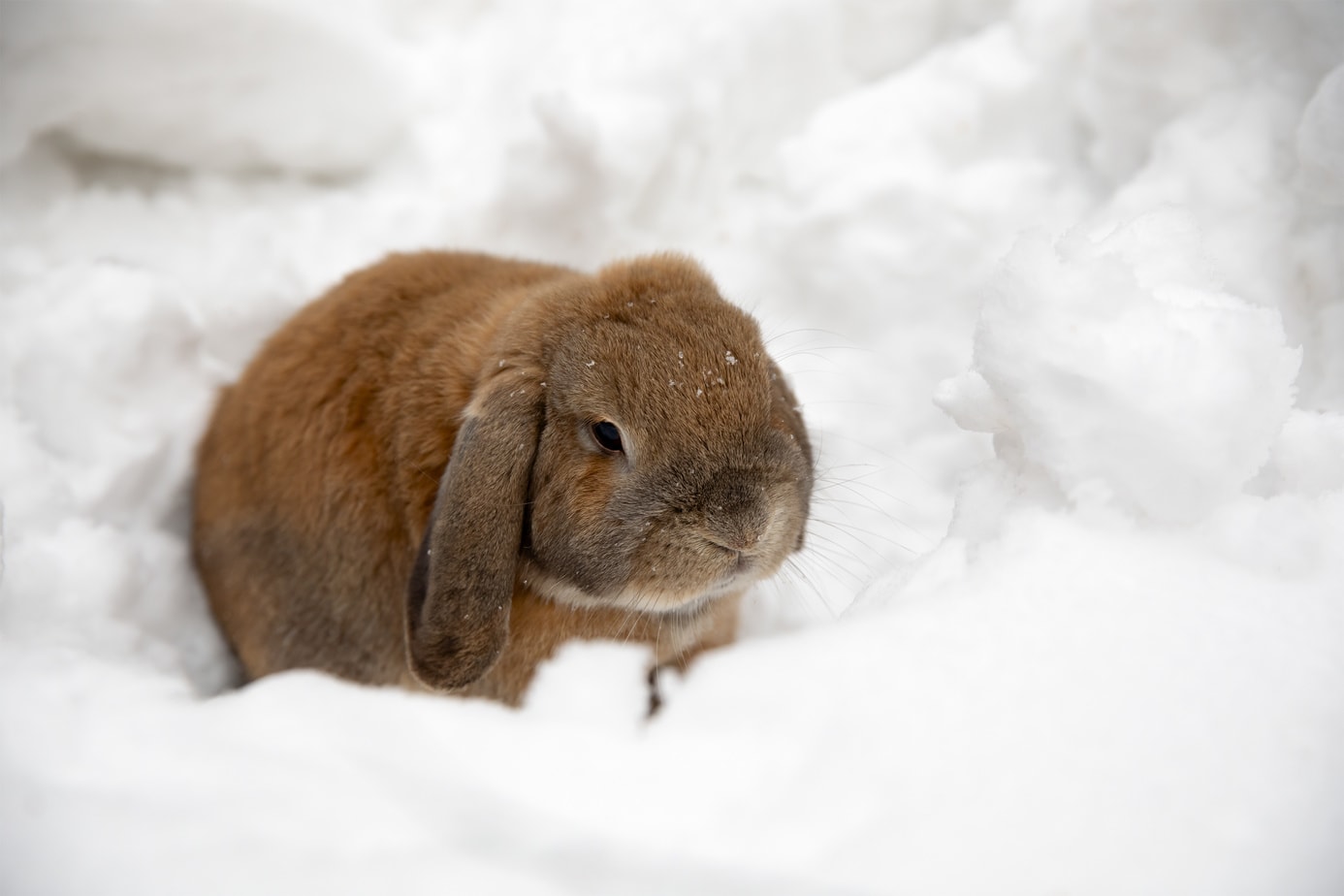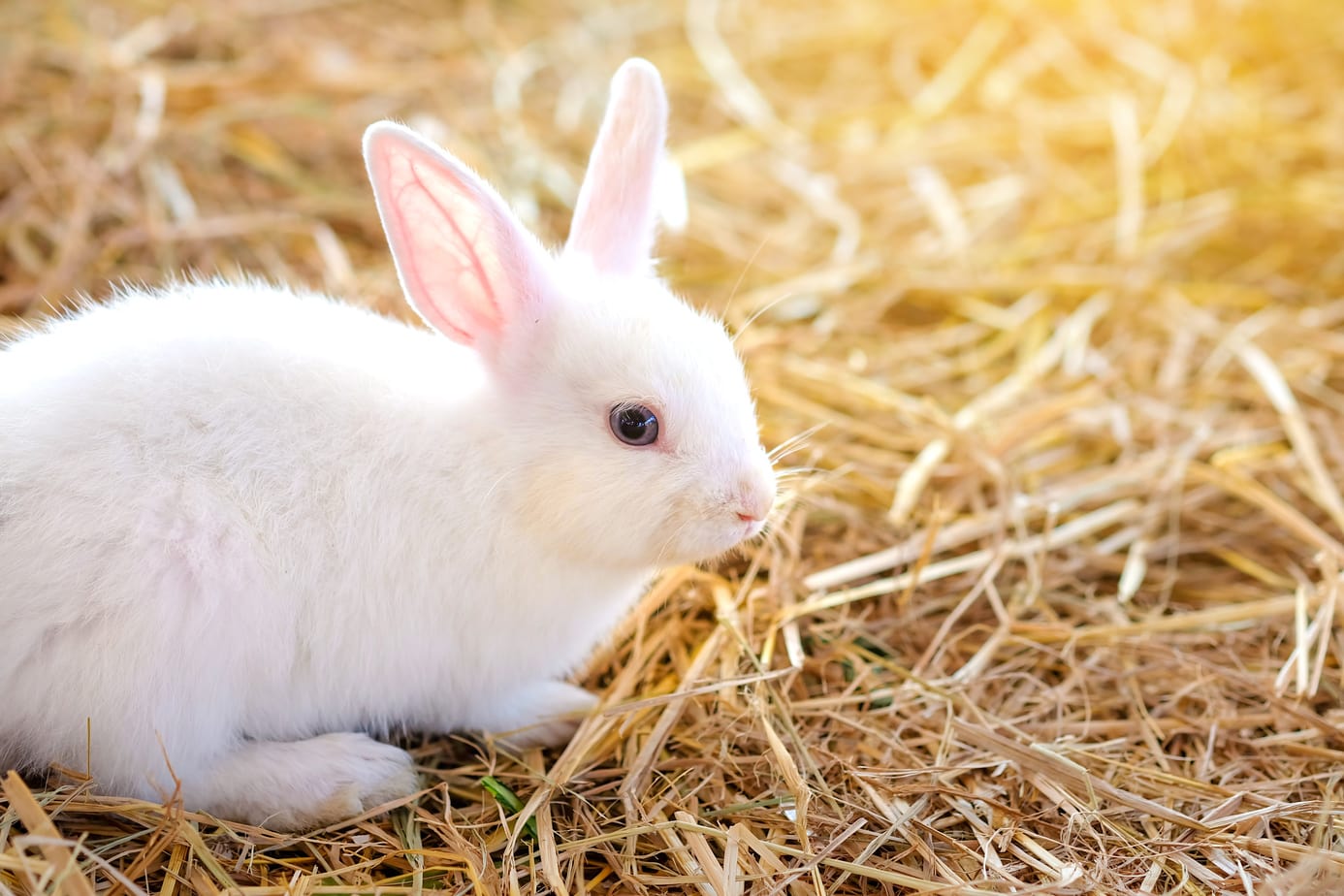
Whether you have a pet rabbit or just raise rabbits in the masses, it is important to know how to care for them in cold temperatures or even in the snow. What will keep them warm and how do you know when they are too cold?
Rabbits should avoid the snow and cold as a small mammal. A rabbit’s natural body temperature is 101.5 to 104.2 degrees Fahrenheit. Rabbits do not hibernate and they are at a high risk of low body temperatures that can lead to death when in freezing temperatures. Rabbits prefer a room temperature of 60-65 degrees Fahrenheit.
Here’s a list of 15 safety tips to keep your rabbits safe while in snowy weather or freezing temperatures.
15 Safety Tips
1. Line Their Cage With Plenty of Hay
Rabbits are natural burrowers. They build nests and, in the winter, will seek ways to make that nest more comfortable. By providing extra hay or even straw can help provide more heat for their bedding. Also, extra hay will give them more food in the winter which can help keep their heat up.
2. Put Extra Newspaper in the Cage
Putting extra newspaper in the cage can help create a good amount of insulation that the rabbit will enjoy. They might also add this to their bedding. If you shred up the newspaper and put it in for their bedding, they will like this as well. It is important to remember to change out their bedding often.
Keep in mind that while shredded newspaper is usually safe, there are a few circumstances where it might not be. Find out about those, whether magazines are safe, and other very cheap bedding options in my article all about using newspaper for your rabbit’s bedding here.
3. Do Not Put Blankets in Their Cage
Blankets should be avoided when it comes to outdoor cages. This is especially true in cages that are susceptible to the elements. If the blanket gets wet in any way in the winter, it will likely freeze and become dangerous for your rabbit’s health.
4. Avoid Using a Hot Water Bottle
It could be tempting to use a hot bottle of water in your bunny’s cage in order to provide some warmth. This, like the blankets, can become a problem for multiple reasons. First off, if the bottle isn’t watched over then it is likely to freeze over time. Second, your bunny will most likely chew on it and could very well choke on any piece that it rips off.
5. Allow Indoor Accommodations
If at all possible, it will be better for your rabbit to stay indoors. This provides a much higher success rate of keeping your rabbit healthy and safe during the winter months. Keeping your rabbit inside will avoid the outdoor elements and keep your rabbit in a controlled zone.

6. Put a Heat Lamp in Their Cage
If indoor accommodations cannot be made, then putting a heat lamp is an excellent way to stabilize the temperature of your rabbit. It is important to limit how often this heat lamp is on as it could make the rabbit’s cage too hot which can cause your rabbit to overheat. Make sure that your rabbit can move away from the heating lamp if they get too warm.
Keep in mind though, that this all changes a little bit if you’re talking about using a heat lamp to keep baby rabbits warm. Find out more about that in my article on using heat lamps to warm baby rabbits here.
7. Put Heat Pads in Their Cage
A bunny safe heat pad is an excellent way to help keep your rabbit warm. Whether electric or one which you can heat which provides warmth for the rabbit for designated times. This controls the heat of their cage and can be healthy for the rabbit during winter.
8. Keep Their Water From Freezing
It is important to keep your rabbit from becoming dehydrated. This can lead to a lower body temperature, so keeping their water unfrozen and at a good temperature to drink will help them feel comfortable.
KEEPING YOUR RABBIT OUTSIDE? After running into just about every issue you can imagine while trying to keep rabbits outside, I’ve finally got the key “sticking” points where most people fail at this figured out. Take a look at my guide How to Keep a Rabbit Outside: A Complete Guide here so you don’t have to figure out things the hard way like I did!
9. Raise Their Cage off the Ground
It is important to keep your bunny cage away from snow that could pile up and get inside their cages. Usually raising the cages off the ground can prevent this from happening. Depending on the amount of snowfall each year in the area you live will determine how high you raise the cage.
10. Use Windblockers
The wind can often be the most dangerous for rabbits when in their cage. By putting cardboard on the side of their cage or even putting plastic on the edge of the cage to prevent wind from getting to your rabbits, you can keep your rabbits much warmer than if they had to deal with the wind. Make sure that if you use plastic that it is not going to be chewed by the rabbits. They will eat it and that is very dangerous for rabbits to digest.
11. Listen to Body Language
A rabbit will let you know if they are too cold, especially if you know their normal body language. If a rabbit is shivering it is a sign that it is too cold and it might not be a bad idea to warm it up inside. But if a rabbit’s body temperature becomes too cold, then it will stop shivering and not move very much at all. This is a sign that the bunny needs immediate attention.
There are many other signs that your rabbit will give off depending on how they’re feeling. You can see specific examples of these signs and what they mean on my page all about the ways rabbits communicate (with examples) here.
12. Give Them Plenty of Exercise Opportunities
It is important to keep up a bunny’s exercise routine. Allow for a bunny to have a couple of hours of exercise each day. This will keep your bunny healthy. If at all possible, give them an indoor area to exercise. This will keep them from becoming wet in any way so they don’t freeze when they are put back in their cage. You can use various tools for this such as rabbit exercise wheels or balls.
13. Keep Them Dry
Make sure to keep your rabbit dry. Rabbits’ fur does not dry easily or quickly. Keeping your rabbit dry will prevent them from freezing and will keep them warmer when they are in the cage.
14. Rabbits Grow Thicker Fur in the Winter
It is important to remember that rabbits have their own natural ways to keep themselves warm in the winter. They will grow a thicker coat in the winter to allow for more warmth. So don’t think that it is entirely up to you to keep your bunny safe in the winter, have faith in your bunny as well.
15. Avoid Temperatures as Low as 0 Degrees Fahrenheit
A rabbit will normally be fine in as low as 10 degrees Fahrenheit. They have their own coping mechanisms and because of their small bodies with high body temperature, they act as their own little furnace. But that furnace has limitations. If the temperature reaches a low level of 0 or colder then it is probably best to bring your rabbit inside or into a more controlled area.
Further Helpful Information
- Can a Rabbit Live in a Garage? (Hint: It Depends) – If your considering keeping your pet rabbit outside simply because you’re cramped on space in your home, what about letting your rabbit live in your garage? Learn how owners are doing this successfully in many circumstances in this article.
